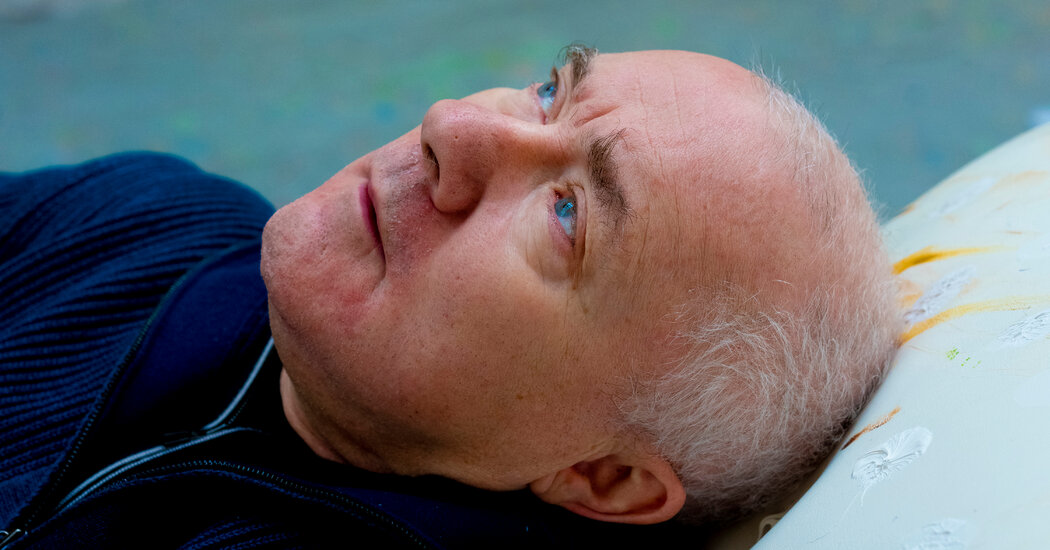
Hirst joining in the mania for NFTs was certainly smart business. He produced “The Currency” project with HENI, an art services business founded by Hage. They grossed about $18 million from the initial sale, and, according to Hage, are collecting a further 5 percent of the proceeds from NFT resales.
“I’ve got about 2,000 people online constantly talking about ‘The Currency.’ Hirst said. “It’s trading all the time: It goes up and down, it’s got value one minute, and not the next.”
“It’s like being in a cult, and I’m the cult leader,” he added.
But Hirst’s lucrative fascination with flower paintings and financial value systems has turned him into a very different artist from the provocateur who in 1990 mesmerized the art world with “A Thousand Years,” a vitrine filled with breeding flies being zapped above a severed calf’s head.
Ivor Braka, a London-based private collector and dealer, acquired Hirst’s mordant motorized formaldehyde piece, “This Little Piggy Went to Market, This Little Piggy Stayed at Home,” at Hirst’s first Gagosian show, in 1996, for about $150,000. Not long afterward, he sold the sculpture to Charles Saatchi, who included it and “A Thousand Years” in the landmark 1997 “Sensation” exhibition in London that introduced Hirst to a wider audience.
“Damien was one of the most radical artists of postwar Britain, both as a sculptor and as a thinker,” Braka said. But Hirst’s subsequent strategy of “making the maximum amount of money in the shortest time was not the greatest decision,” he added.
Under the guidance of a previous manager, the accountant Frank Dunphy, Hirst became a global brand. He negotiated huge cuts from his galleries, collaborated with his dealer White Cube in 2007 to put a diamond-encrusted skull on the market for close to $100 million and then bypassed the gallery system altogether the following year by selling 223 works in a $200 million Sotheby’s auction, just at the moment when the global financial system was about to crash.




